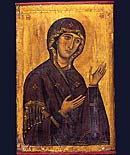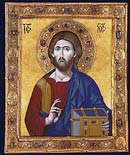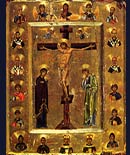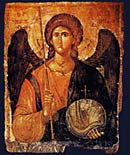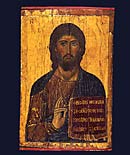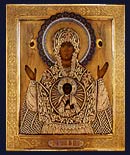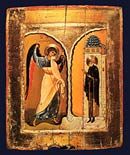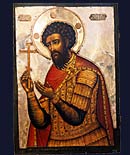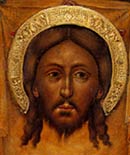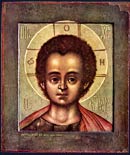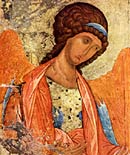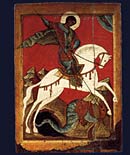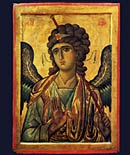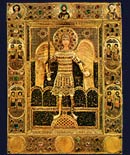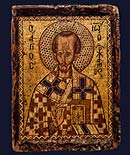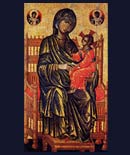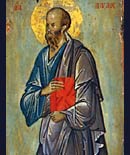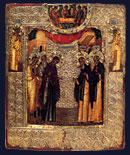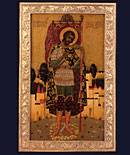Gallery - Ikon of the Theotokos
Egg Tempera on Wood
Mid - Late 13th Century
National Gallery of Art, Washington, D.C.
Sometimes called the Kahn Madonna, for a previous owner, this image of the Virgin and Child shows them seated upon a gilded wooden throne set with a rich red cushion. The Virgin inclines her face towards her Son who blesses her. The Virgin's eyes are turned towards us.
The face of the Virgin has many similarities to the image of the Virgin in the great Deesis mosaic of Hagia Sophia in the South Gallery of the former church. At the same time her face is more strongly modelled with deeper shadows. The triumphant, regal - even aristrocratic - pose of the Virgin and Child, along with the elaborate throne indicate the painting might date from after the reconquest of Constantinople by Emperor Michael Paleologus in 1261.
The distance between the Virgin and Child shows extreme restraint and dignity.
Extraordinary fine technique and workmanship places this ikon at the highest level of artistic production in its era. Considering its elegance and craftsmanship this ikon may be product from a workshop producing gifts for the reestablished Imperial Court. Presents such as this ikon were sent to influential individuals or organizations in the West during Michael's reign to gain favor in his struggle to defend the Empire against foreign adversaries.
Another ikon, closely matching the Kahn Madonna, is in the National Gallery.
Mid - Late 13th Century
National Gallery of Art, Washington, D.C.
Sometimes called the Kahn Madonna, for a previous owner, this image of the Virgin and Child shows them seated upon a gilded wooden throne set with a rich red cushion. The Virgin inclines her face towards her Son who blesses her. The Virgin's eyes are turned towards us.
The face of the Virgin has many similarities to the image of the Virgin in the great Deesis mosaic of Hagia Sophia in the South Gallery of the former church. At the same time her face is more strongly modelled with deeper shadows. The triumphant, regal - even aristrocratic - pose of the Virgin and Child, along with the elaborate throne indicate the painting might date from after the reconquest of Constantinople by Emperor Michael Paleologus in 1261.
The distance between the Virgin and Child shows extreme restraint and dignity.
Extraordinary fine technique and workmanship places this ikon at the highest level of artistic production in its era. Considering its elegance and craftsmanship this ikon may be product from a workshop producing gifts for the reestablished Imperial Court. Presents such as this ikon were sent to influential individuals or organizations in the West during Michael's reign to gain favor in his struggle to defend the Empire against foreign adversaries.
Another ikon, closely matching the Kahn Madonna, is in the National Gallery.
< last: Mosaic Ikon of St. John Chrysostom next: The Great Panaghia >

